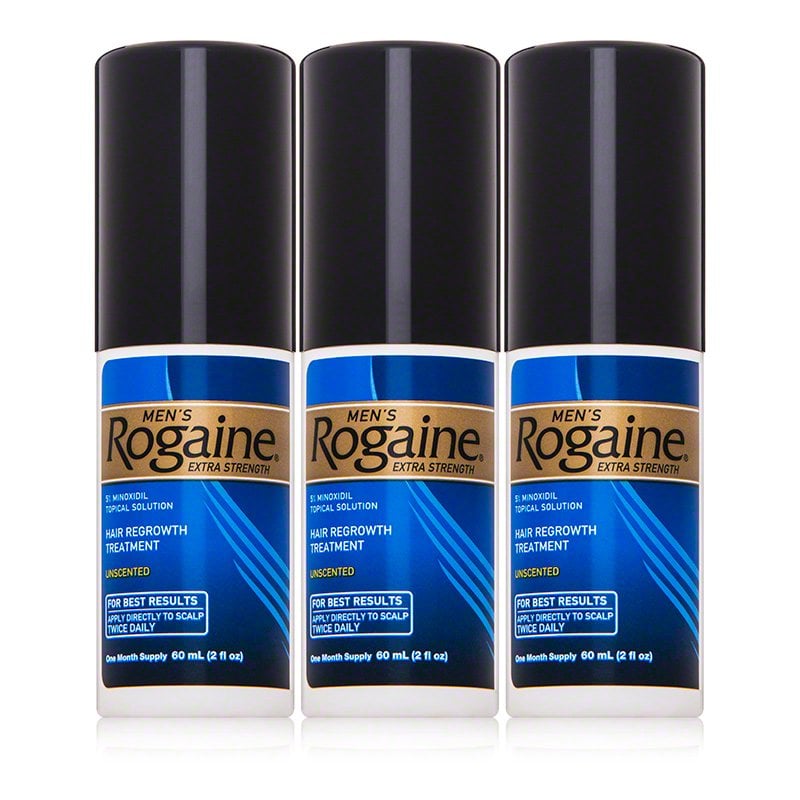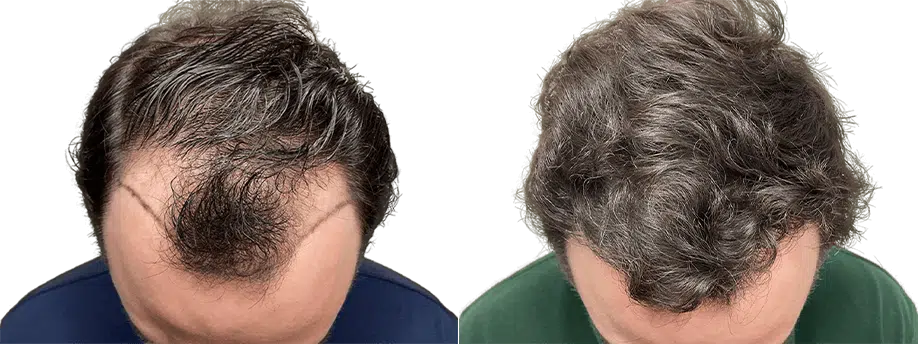What To Use After A Hair Transplant
The time following the completion of the hair transplant procedure is a critical one, and patients should follow any and all of the specific advice and instruction provided by their hair transplant surgeon. Although the healing process requires patience before the hair transplant recipient is able to experience the full extent of the benefits of this procedure, the level of care required during this time is not all that difficult and it is certainly not overly complex.
Once the recipient site has had some time to heal following the procedure, most patients can begin using the same products they used before the transplant procedure. Patients often have questions regarding specific products or hair care strategies that might further enhance the benefits of the hair transplant. These questions may include one or more of the following:
- Prescription and non-prescription drugs aimed at hair preservation
- Rogaine
- Propecia
- Products containing natural oils (like coconut oil)
In addition to the use of these products, many patients alter their dietary habits and begin including foods containing nutrients associated with hair regrowth or preservation. A change in diet can serve as an effective complement to the products mentioned above, and it is possible that some of the products may produce better results when used in conjunction with one another. In any case, it is always best for the patient to confer with the doctor regarding the best after-care strategies following the completion of a hair transplant procedure.
Products that are nutritious for hair regrowth after transplant

There are a variety of products that can be utilized by patients following a hair transplant procedure, with many electing to take advantage of the widespread availability of dietary supplements capable of supplying the specific nutrients associated with hair regrowth and follicle strength. Foods or supplements rich in protein, iron, magnesium, Vitamin B6, zinc and calcium have all been associated with the strengthening and regrowth of hair follicles after undergoing a hair transplant procedure.
Nutrient-rich foods and supplements are not the only products available to recent hair transplant recipients. There are a number of prescription and non-prescription drugs that can be used quite effectively by patients seeking to maintain their existing hair and enhance the strength of their remaining hair follicles. Products featuring natural oils are also used to strengthen hair follicles after a transplant and may contribute to the further preservation of the patient’s remaining natural hair. Products containing coconut oil are typically cited as the most popular option, but there are a number of other products that are similarly effective in preserving and strengthening hair follicles.
Topical prescription and non-prescription drugs to preserve hair
There is a wide range of topical options available via prescription, but there is also a number of non-prescription hair preservation and regrowth options available to recent hair transplant recipients as well. In fact, prospective patients may find that a hair transplant doctor will recommend a topical product instead of a hair transplant following the initial consultation and depending on the specific circumstances pertaining to the patient’s level of hair thinning or loss.
Perhaps the most well-known topical solution is Rogaine, which is available to patients over-the-counter without any prescription. In addition to Rogaine, patients may consider using either prescription or non-prescription shampoos to preserve their hair or stimulate regrowth. Shampoos containing ketoconazole, copper, zinc or keratin amino acids are the most common options and may be available with or without a prescription.
Propecia is likely the most readily identifiable hair preservation and regrowth option available with a prescription, and there is evidence that Rogaine and Propecia work particularly well when utilized simultaneously. The orally ingested Propecia blocks the production of DHT, the hormone responsible for the kind of hair loss that leads a patient to consider and undergo a hair transplant procedure.
Use of Rogaine following a hair transplant

It is not uncommon for patients to have used Rogaine before considering a hair transplant, and doctors often field questions regarding the continued use of Rogaine following the hair transplant’s completion. Since Rogaine has a long history of success in stimulating hair growth over countless clinical trials, it is widely regarded as a safe and effective complement for use after a hair transplant.
In addition to it long track record of success, hair transplant patients tend to favor this option due to the simple fact that the topical foam solution is unscented and easily applied. Anyone who has witnessed the progression of hair loss is likely familiar with how follicle growth in certain areas of the scalp ceases so that it appears as though the follicles in these areas have shrunk relative to the unaffected hair follicles. Rogaine’s principal ingredient specifically targets these areas in order to stimulate the “shrinking” follicles so that they begin to grow anew and return as thick and as strong as before.
As always, patients should consult their doctor to determine the precise time needed between the completion of the hair transplant procedure and the commencement of any hair regrowth or preservation regimen, including one that features the use of Rogaine. It is generally accepted, however, that the use of a topical solution can commence once the hair transplant recipient site has healed to a reasonable degree following the initial transplant procedure.
Use of Propecia following a hair transplant

Like Rogaine, Propecia is one of the more readily identifiable products available for hair transplant patients and candidates alike. That is where the similarities between the two essentially end, however, as Propecia is not available over-the-counter and requires a prescription from a doctor, most likely a dermatologist. Propecia is also taken by mouth, whereas Rogaine is a topical solution applied directly to the scalp. There are also some potential side effects associated with the use of Propecia, which is why it remains important for the patient to discuss this option with a doctor before using it as a solution for thinning hair or hair loss.
Assuming Propecia’s benefits outweigh any potential complications in the eyes of the patient and his or her doctor, this oral prescription medication has been proven in clinical trials to block DHT, the hormone responsible for male pattern baldness. When used in conjunction with a hair transplant procedure, Propecia may be effective in reducing the possibility of additional hair loss occurring outside of the hair transplant recipient sites.
Once the recipient site has sufficiently healed, many patients, in and around New York, Connecticut, Chicago, choose to use Propecia and Rogaine simultaneously since there is evidence that the two options have a synergistic effect on hair regrowth and preservation. With Propecia blocking DHT and Rogaine stimulating growth among weakened follicles, recent hair transplant recipients may be able to enhance the effectiveness of the hair transplant procedure by including these products as a part their after-care regimen.
Of course, it is important to note that the use of any product as well as the ideal timeline in which to they can be used should be discussed with the hair transplant surgeon. This will allow the doctor to give very specific advice based on the circumstances surrounding each individual’s hair loss, and this ensures that patients pursue the most ideal course of action for their unique situation.

